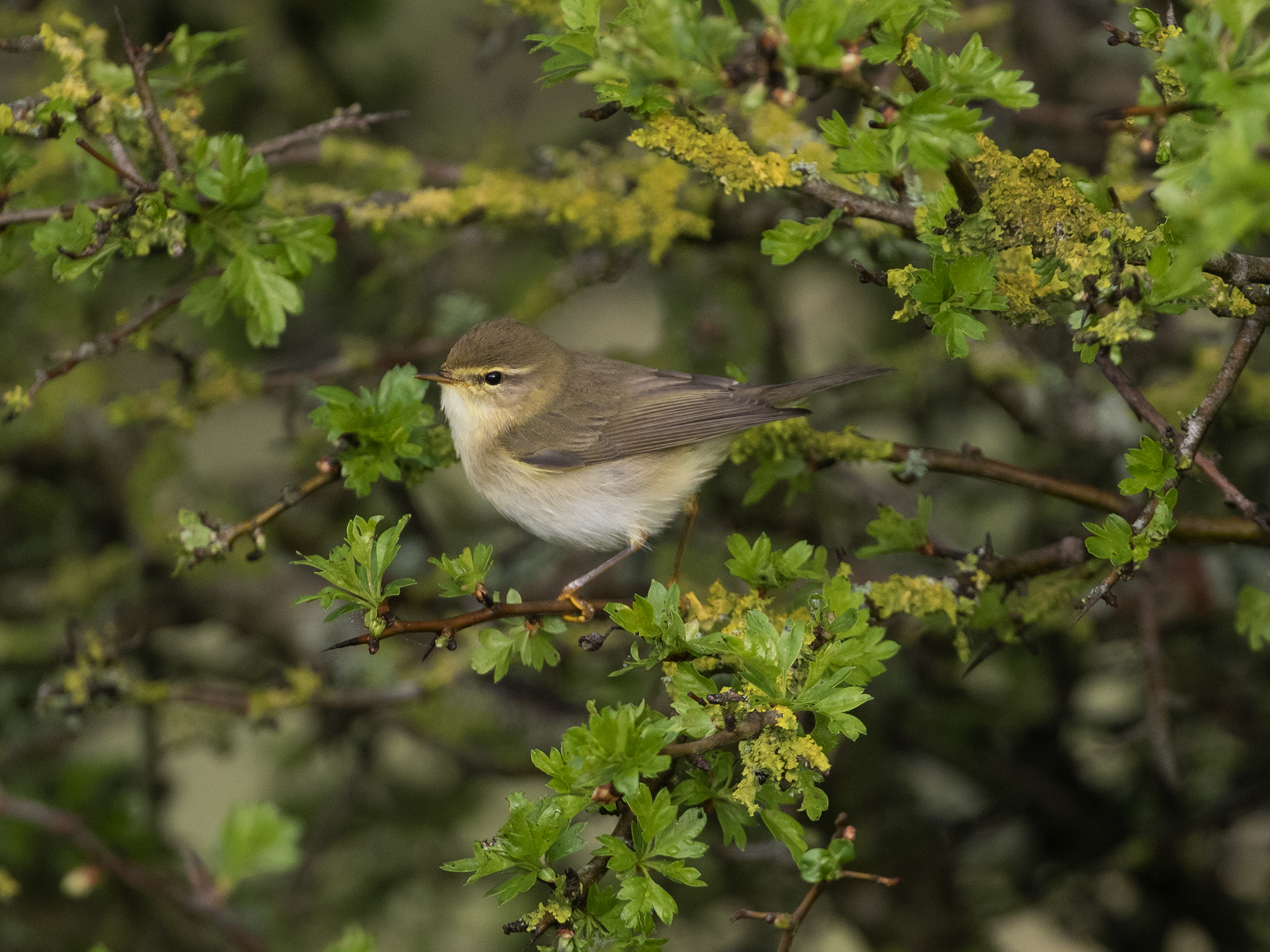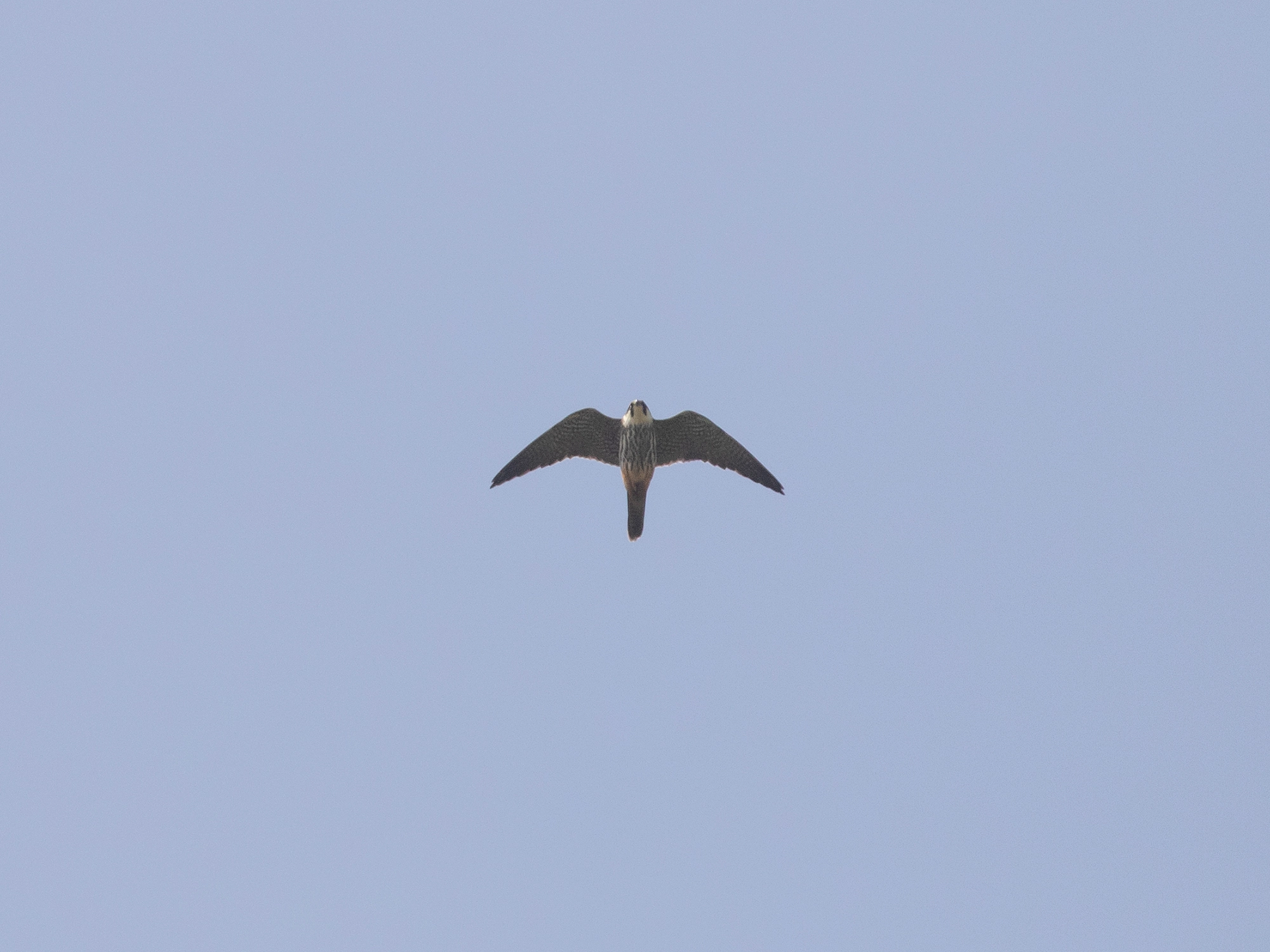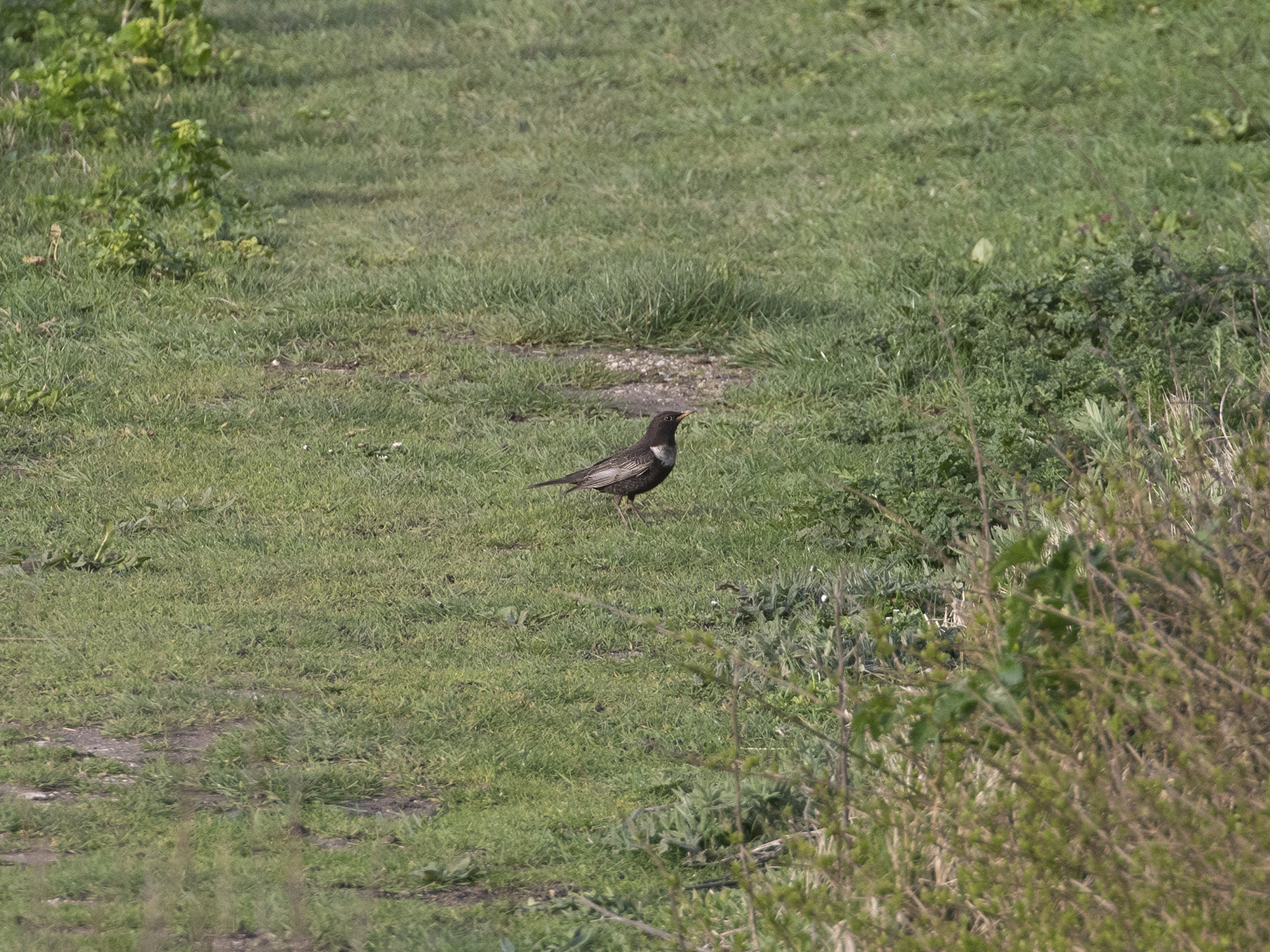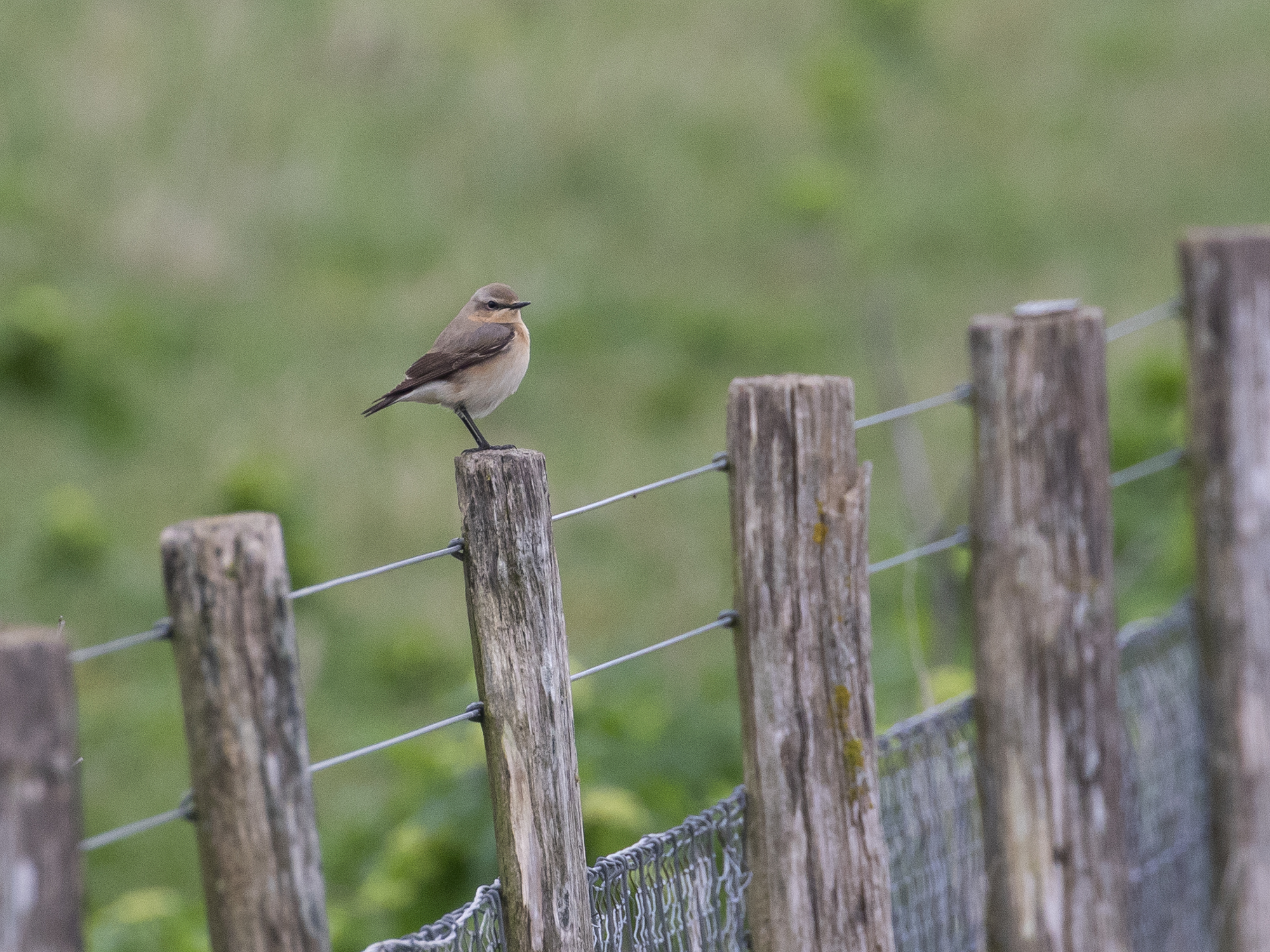A few days of variable weather, with some rain, so light and heavy and wind blowing from all directions but little to show for it.

A Green sandpiper over the cliffs and 5 or 6 Willow Warblers and a few Swallows on the 24th, the Whimbrel in the overspill carpark field was still around on the 25th. Rich and I walked the length of the patch on saturday the 27th, with poor visability, rain clearing and light South Easts and had the first Swift of the year, also the first Hobby, a single Red Kite, 2 Willow Warblers, Reed Warbler, Yellow Wagtail, 20 Swallow, House Martin.

An afternoon visit en route to Sea watch in the bay produced 2 more Willows, and 5 Wheatear on the old airfield. An hours afternoon Seawatch in light NE winds wasn’t awful, a fairly close Arctic Skua, 4 Barwit 18 Whimbrel, 6 Common Scoter, among Gannets a few Sandwich terns and Kittiwakes.
This morning’s (28th) Seawatching totals were as follows: 4 Bonxie, 7+ Arctic Skua, Red Breasted Merganser, 5 Sandwich Tern, 40+ Commic Terns, 16 C Scoter, Swallow, Whimbrel, 15 Red Throated Divers, Gerald and Nigel also had Great Northern Diver & 2 Velvet Scoter just before I arrived.


































